The North State: Learning about Regional Climate Collaboratives
How can under-resourced communities build their own community-driven leadership to better position themselves to receive public funding for climate change mitigation and adaptation?
This was the central question the California Strategic Growth Council explored through a recent convening on Regional Climate Collaboratives. Here in the North State, communities are experiencing severe and worsening trends due to climate change, so it’s important to learn about how our region might take part. As a reminder, The McConnell Foundation serves 5 California counties (Shasta, Siskiyou, Trinity, Tehama & Modoc)…yes, a part of northern California that is even further north than San Fransisco or Sacramento.
Here are my 5 top takeaways from the event:
1. The What: Regional Climate Collaboratives
A Regional Climate Collaborative is a group that provides “capacity-building services to assist in building the community-driven leadership, knowledge, skills, experience, and resources to identify and access public funding for climate change mitigation and adaptation projects within the under-resourced community.” Here is a bit of what they do:
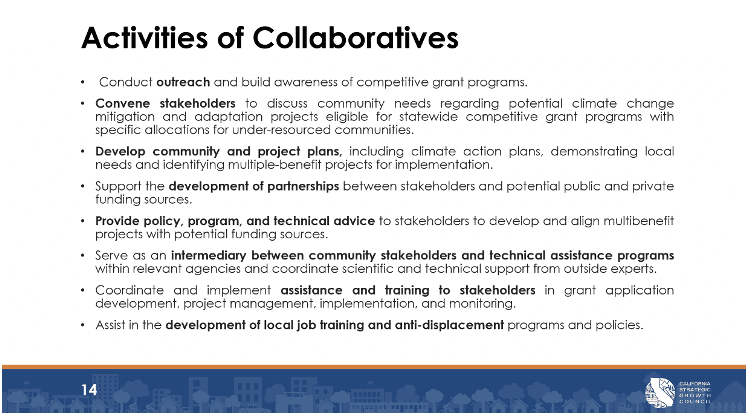
2. The Why: 7 Objectives of the Work
The team from the Strategic Growth Council expressed clarity on why they are building toward Regional Climate Collaborative work. It builds toward 7 key objectives: 1) social & racial equity 2) integrated climate action 3) leverage funding 4) trust & relationship building 5) community engagement & organizing 6) education & training 7) peer-to-peer learning. During the convening, there was an interesting moment where they asked participants to weigh in on what their top three objectives were. Here were the results:
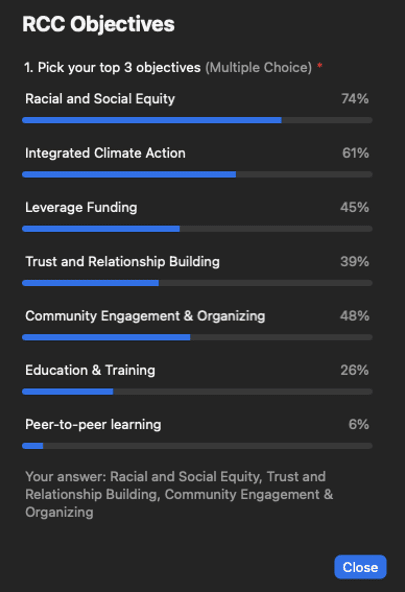 3. The Who: What makes a community “under-resourced?”
3. The Who: What makes a community “under-resourced?”
These kinds of things are understandably hard to define, but here is the what it comes down to for the purposes of Regional Climate Collaboratives: under-resourced communities are 1. Top 25% CalEnviroScreen (a tool that identifies California communities by census tract that are disproportionately burdened by, and vulnerable to, multiple sources of pollution) 2. AB1550 low-income communities (is yours one? Find out by mapping your address here). 3. Community with median household income less than 80% of statewide average. It turns out, this is a whole lot of California:
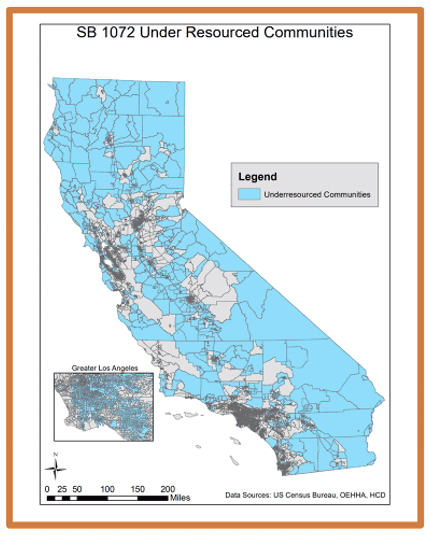 4. The How: Incorporating Lessons Learned from other Programs
4. The How: Incorporating Lessons Learned from other Programs
The team that is working on this is clearly engaged in an intentional learning cycle. My favorite amongst the reflections came from reflections on how to structure collaboratives that had come from the Transformative Climate Communities program (If memory serves, I believe it was the Greenlining Institute that presented this portion). Here is a “best practices” structure from the TCC context.
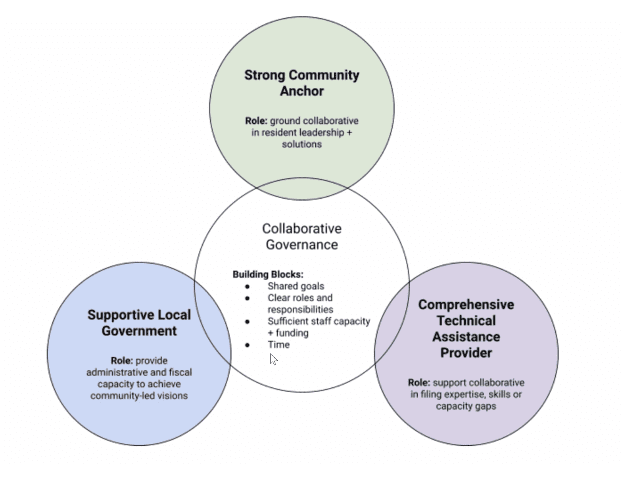
In addition, it was great to learn from other participants as we collaboratively made a “jamboard” together to surface some key points that would set up the Regional Climate Collaboratives up for success. Important reflections about power dynamics here–take a look!:
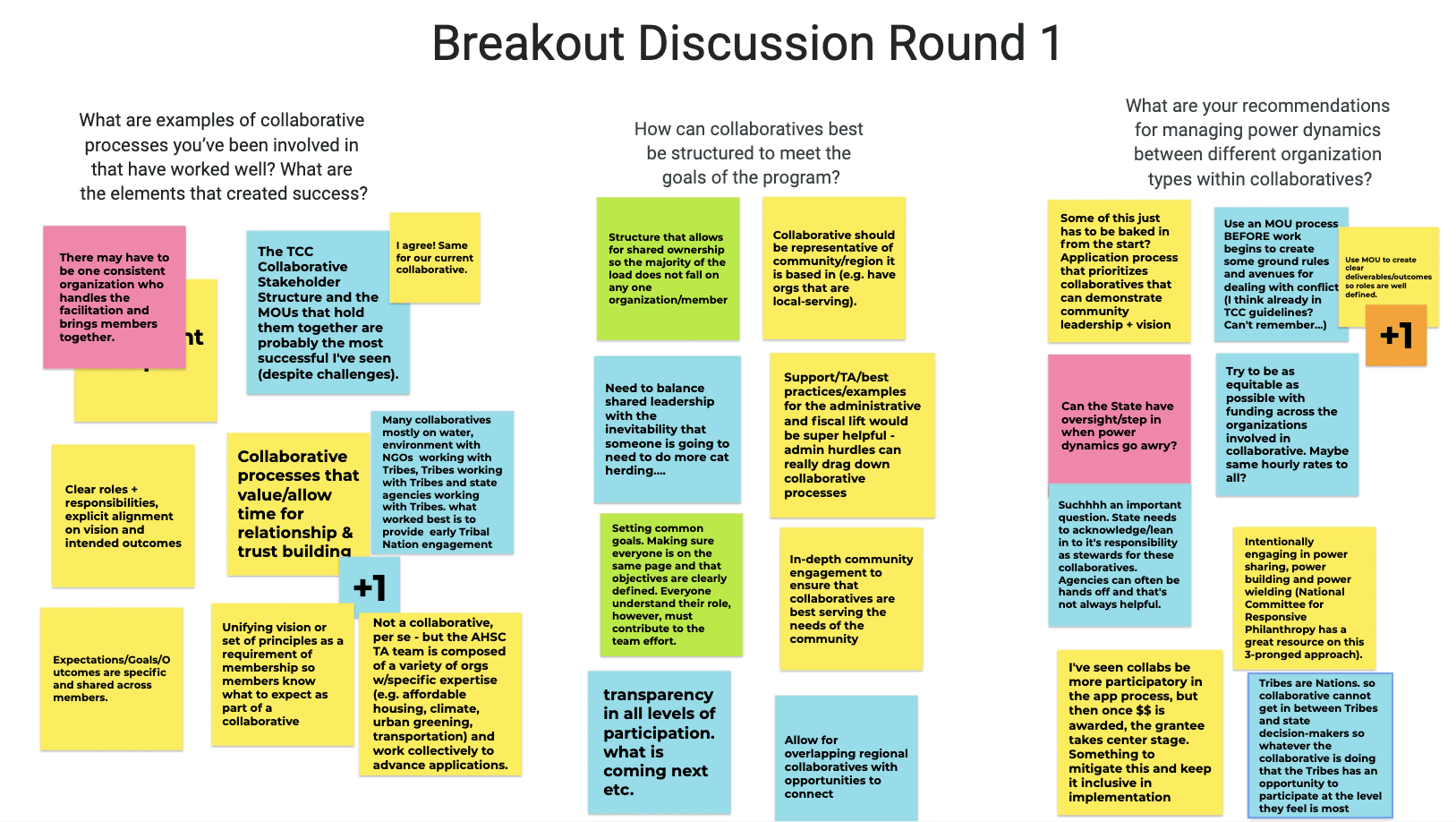
5. The When: Stay tuned for more this Fall
The authorizing legislation for Regional Climate Collaboratives passed in 2018 (SB 1072, Leyva), and it outlines a vision for the Strategic Growth Council to administer the program until October 2029. A budget proposal for $20 million to support the work was included in the Governor’s May Revise, and it is expected that there may be more information this fall pending negotiations between legislature and Governor’s office. Stay tuned!


